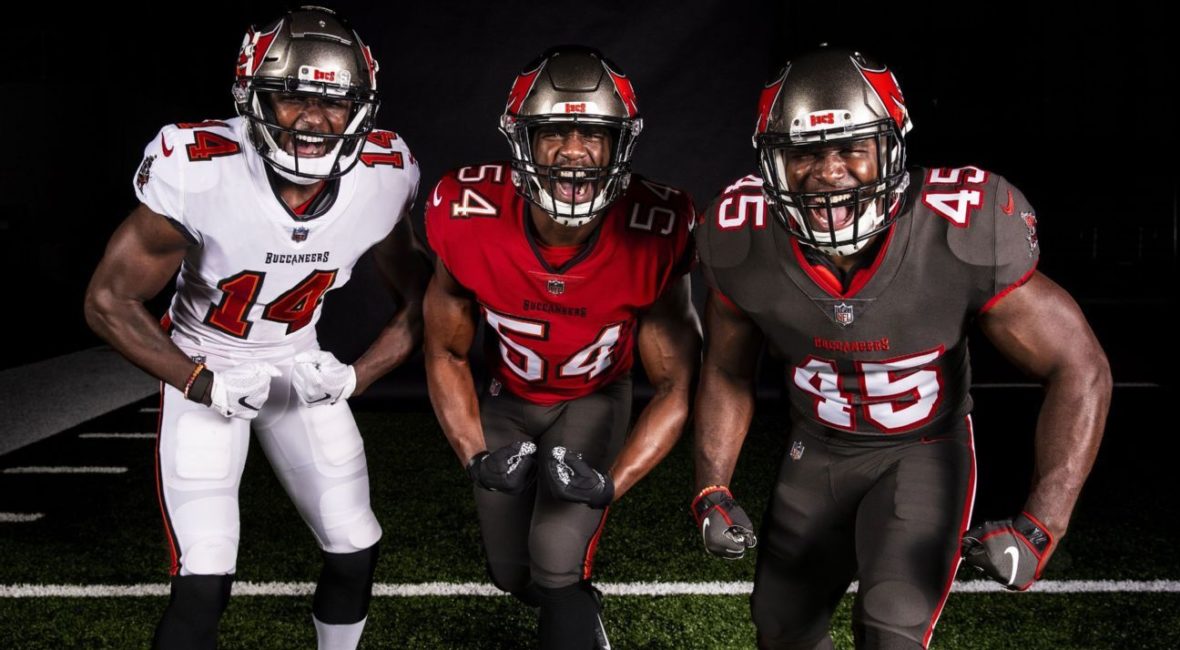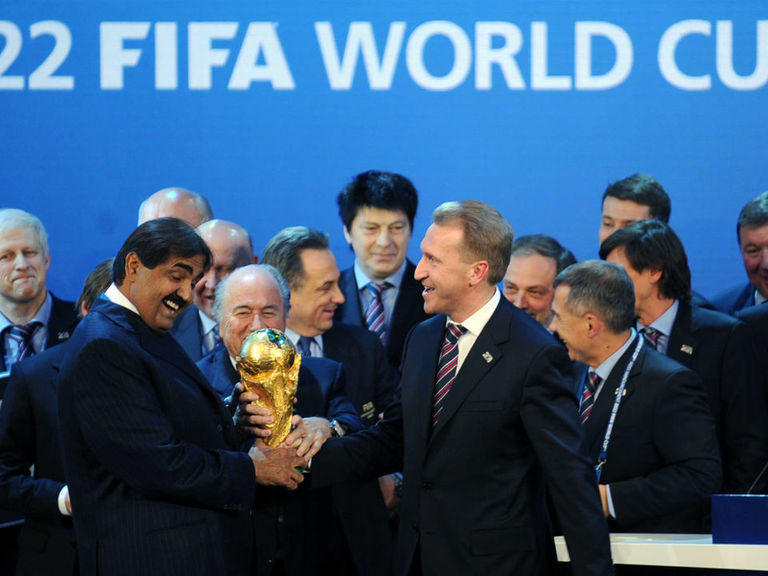TAMPA, Fla. — The “alarm clock” uniform numbers are no more for the Tampa Bay Buccaneers, who are going back to their roots in 2020 with a new uniform that pays homage to their best years and adds a futuristic twist, the team announced Tuesday.
Allow us to show you the future ?#GoBucs pic.twitter.com/naURTtwkZ3
— Tampa Bay Buccaneers (@Buccaneers) April 7, 2020
They won’t be wearing the “creamsicle” colors from their earliest days — as some fans have called for — but have gone to a look that most closely resembles the threads from their winningest era of football from 1997-2013 and their Super Bowl XXXVII title.
“This new but familiar look is a direct result of the valuable feedback we received from our fans,” Buccaneers owner/co-chairman Ed Glazer said in a statement. “We are excited to return to our classic Super Bowl era uniforms while also introducing a sleek Color Rush uniform that showcases our signature pewter in a new and dramatic way. The refreshed classic design of our home and away combinations bridges our past with our exciting new future, and we are confident it will resonate with our fans.”
The Bucs spent two years creating their previous uniforms, which they unveiled in 2014, but they were never a hit with the fanbase, who complained that they were “too busy” and that the numbers were too difficult to read.
NFL rules mandate that uniforms can only be changed every five years though. Wearing the previous uniforms until 2019, the Bucs went 34-62 (.354), third-worst in the NFL, and did not reach the postseason.
From 1976 to 1996, the Bucs wore orange and white “creamsicle” uniforms with red trim and a winking pirate known as “Bucco Bruce.” Then in 1997, under their current ownership — the Glazer family — the Bucs unveiled a totally new color scheme that featured red, black, white and pewter and replaced Bucco Bruce with a menacing skull and swords logo. They kept that look for 17 years, going 133-139 and 5-6 in the postseason.
There are differences between the new uniforms and those from the Super Bowl era, though. The fit of the jersey and pants are sleeker with less sheen and more of a matte finish. And they have three different color combos instead of two — red, white and an all-pewter uniform for Color Rush games. They had previously worn all red for Color Rush games.
Their pewter helmet with the oversized logo that made its debut in 2014 will remain, but instead of chrome will have a black face mask.
Several FIFA executives received bribes for voting in favor of Russia and Qatar as respective hosts of the 2018 and 2022 World Cups, federal prosecutors alleged in an indictment unsealed Monday in U.S. District Court in Brooklyn.
According to documents obtained by Ronald Blum of The Associated Press, the former vice president of FIFA and president of CONCACAF, Jack Warner, received approximately $5 million to vote for Russia’s bid to host the 2018 World Cup.
Warner received more than two dozen separate money transfers from 10 shell companies, several of which were based in the U.S. and “performed work on behalf of the 2018 Russia World Cup bid,” according to the documents.
Warner hasn’t held office with FIFA since May 2011 after the organization’s ethics committee provisionally suspended him and Mohammed bin Hammam for corruption allegations. FIFA announced Warner’s resignation from all football-related posts in June 2011.
Additionally, prosecutors on Monday charged two former 21st Century Fox Inc. executives, Hernan Lopez and Carlos Martinez, for allegedly paying CONMEBOL officials to obtain information on the bidding for broadcasting rights from an unnamed co-conspirator.
ESPN held the United States’ English-language broadcasting rights for the World Cup from 1994-2014, but FOX won a bid in 2011 to broadcast the 2018 and 2022 tournaments.
The indictment unsealed Monday also alleges that Rafael Salguero, a Guatemalan former member of the FIFA executive committee, was promised $1 million in exchange for a vote in support of Russia.
It is also alleged that Ricardo Teixeira, the former president of the Brazilian Football Confederation (CBF), Nicolas Leoz, the late former South American football federation (CONMEBOL) president, and one unnamed individual all received bribes to vote in favor of Qatar as host of the 2022 World Cup.
In 2017, Alejandro Burzaco, the former head of Argentine marketing company Torneos y Competencias, testified that all three South American individuals on FIFA’s 22-person executive committee took million-dollar bribes to support Qatar.
Qatari officials “strongly” denied allegations of wrongdoing on Tuesday.
“Despite years of false claims, evidence has never been produced to demonstrate that Qatar won the rights to host the (World Cup) unethically or by means that contravened FIFA’s strict bidding rules,” read a statement from Qatar’s Supreme Committee for Delivery & Legacy.
There have been 26 known guilty pleas since the initial indictments stemming from a massive corruption investigation were first announced in 2015. Late ex-CONCACAF general secretary Chuck Blazer was among those who pled guilty, while former CONMEBOL chief Juan Angel Napout and CBF president Jose Maria Marin were both convicted.




